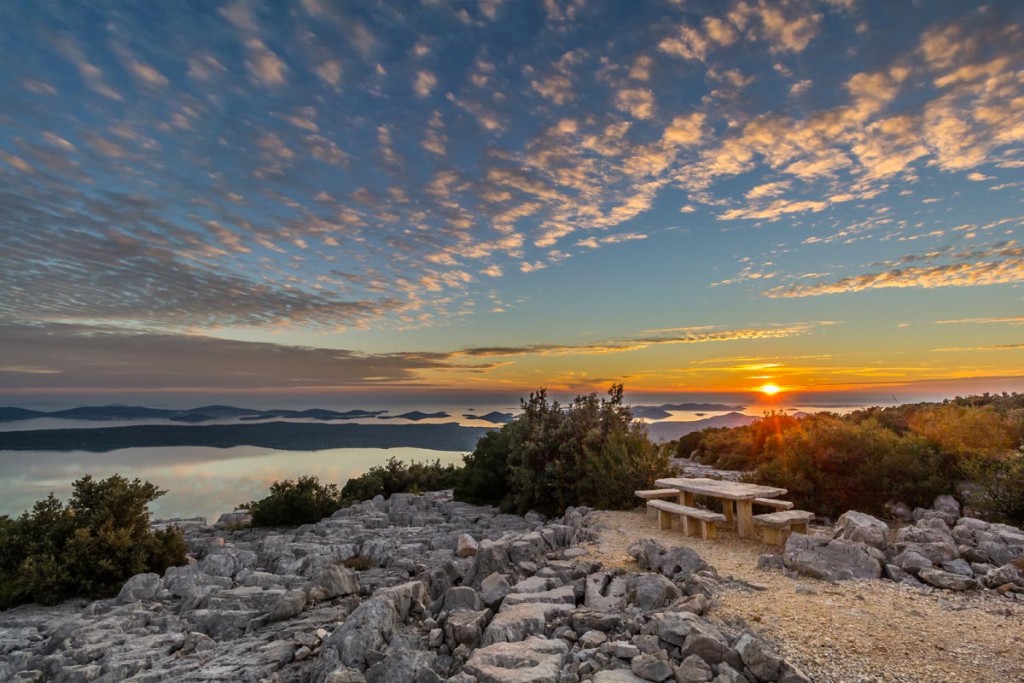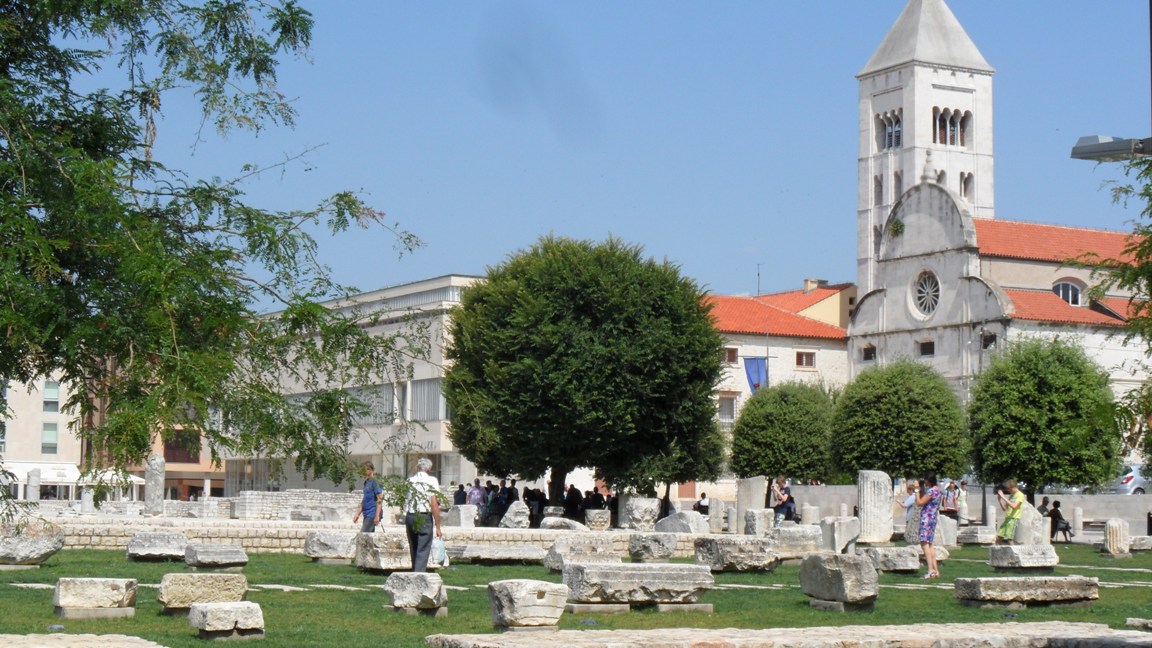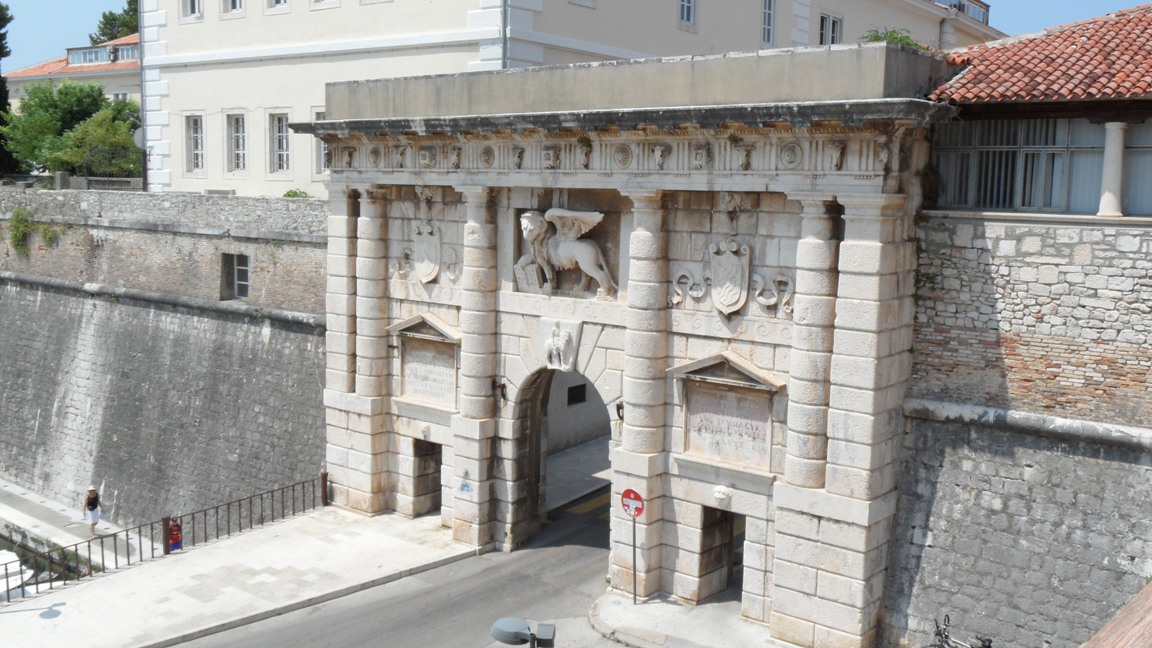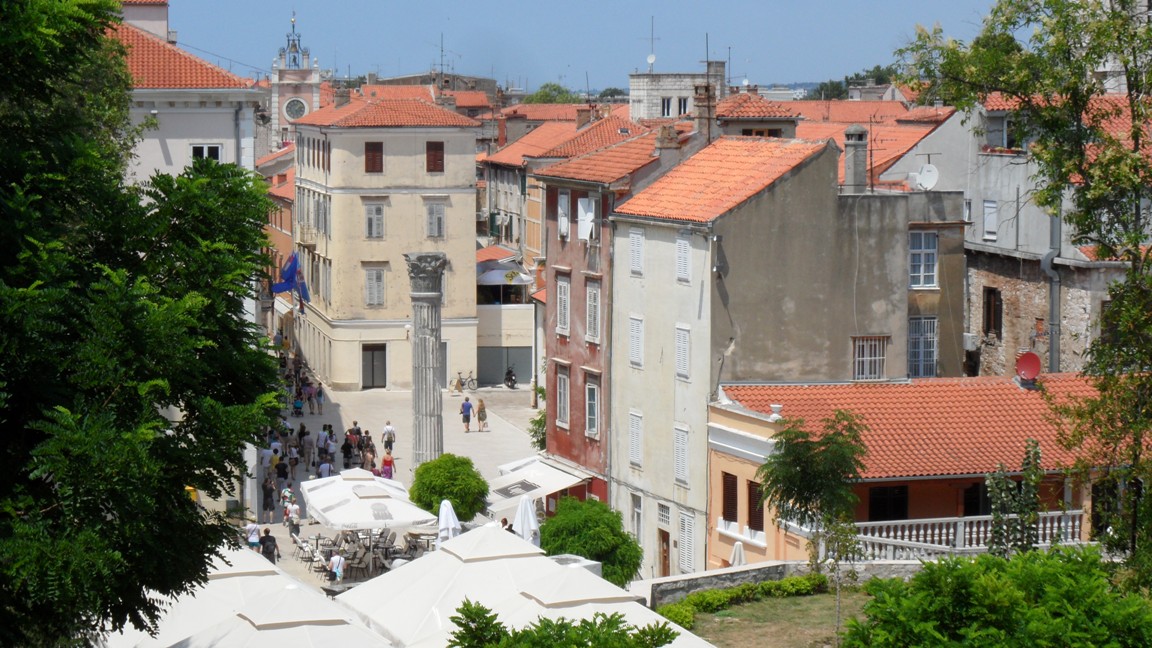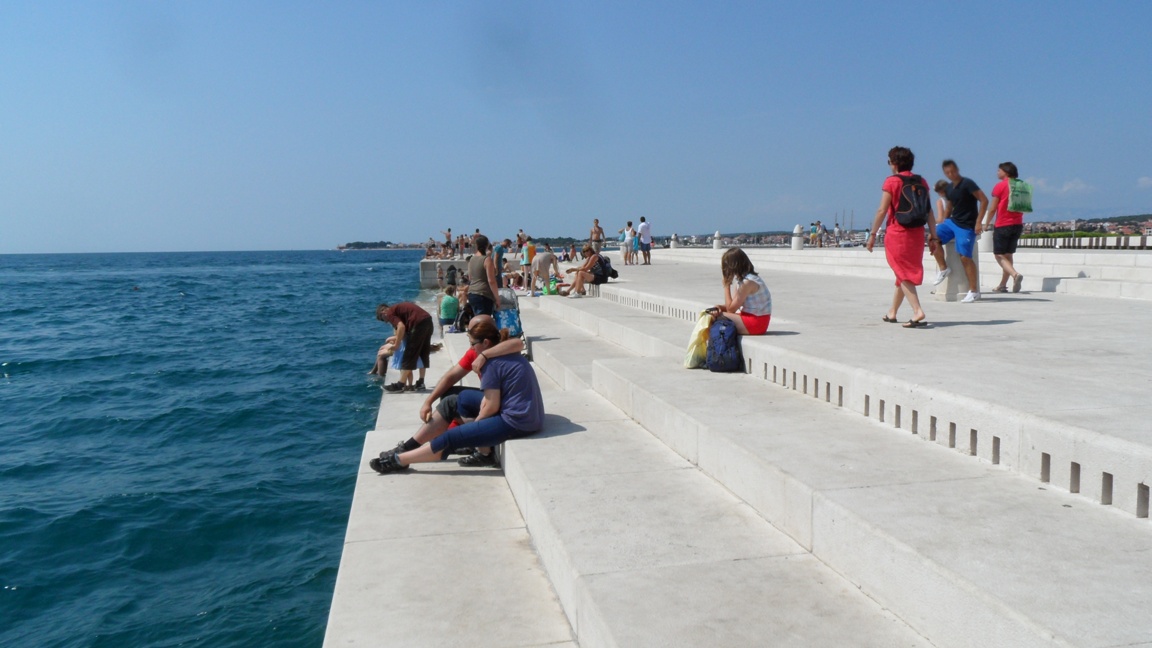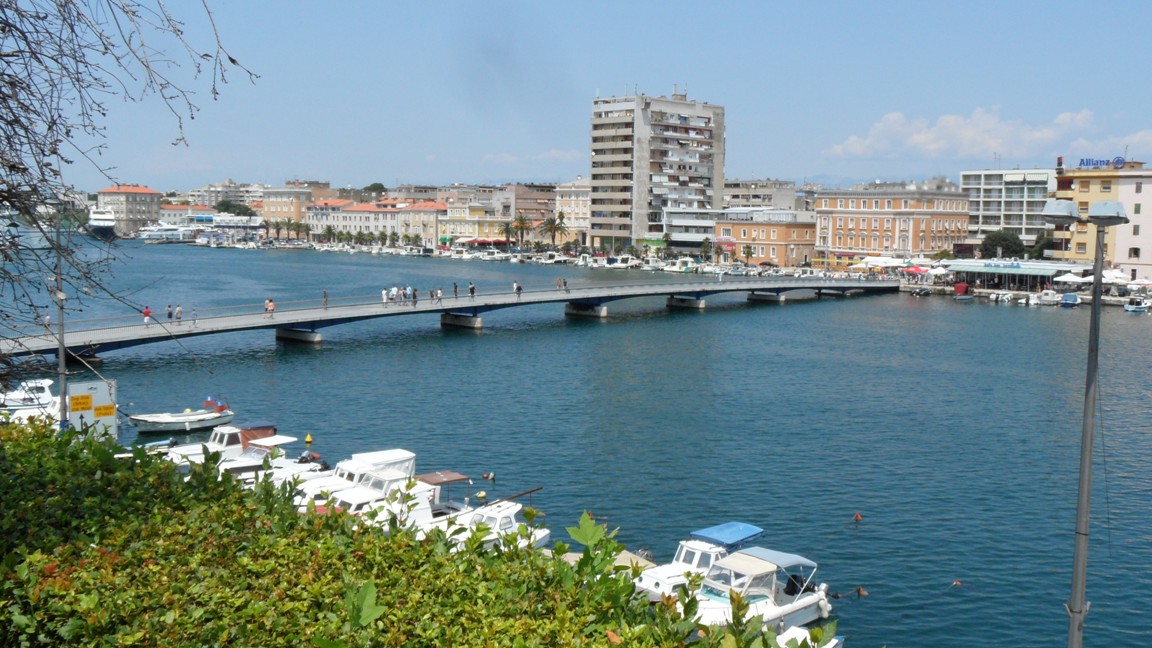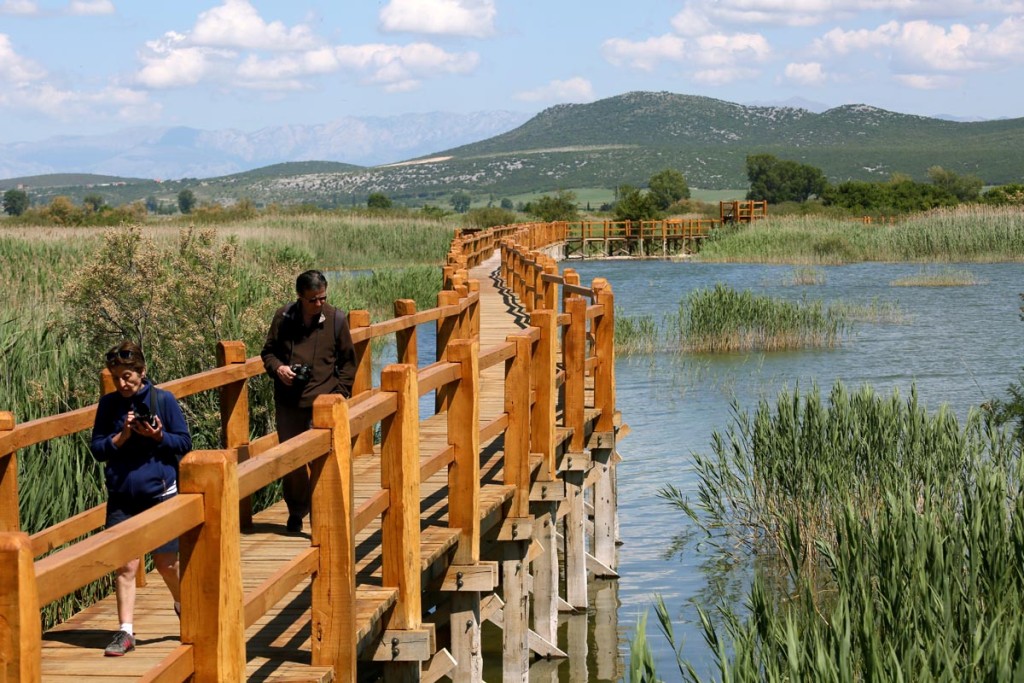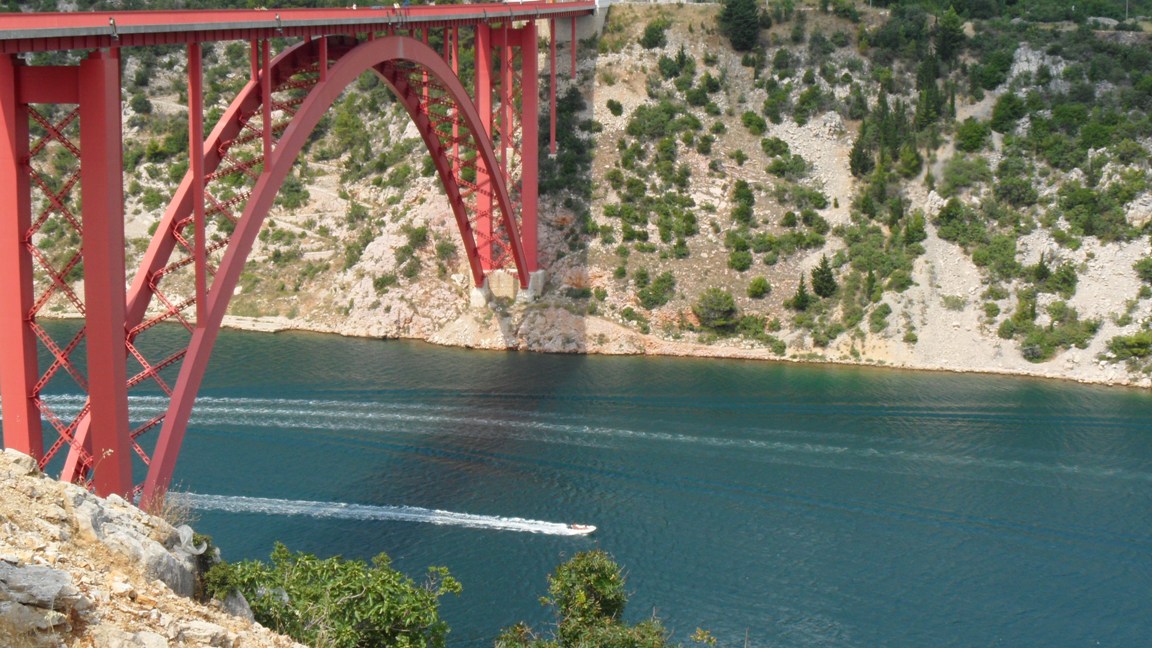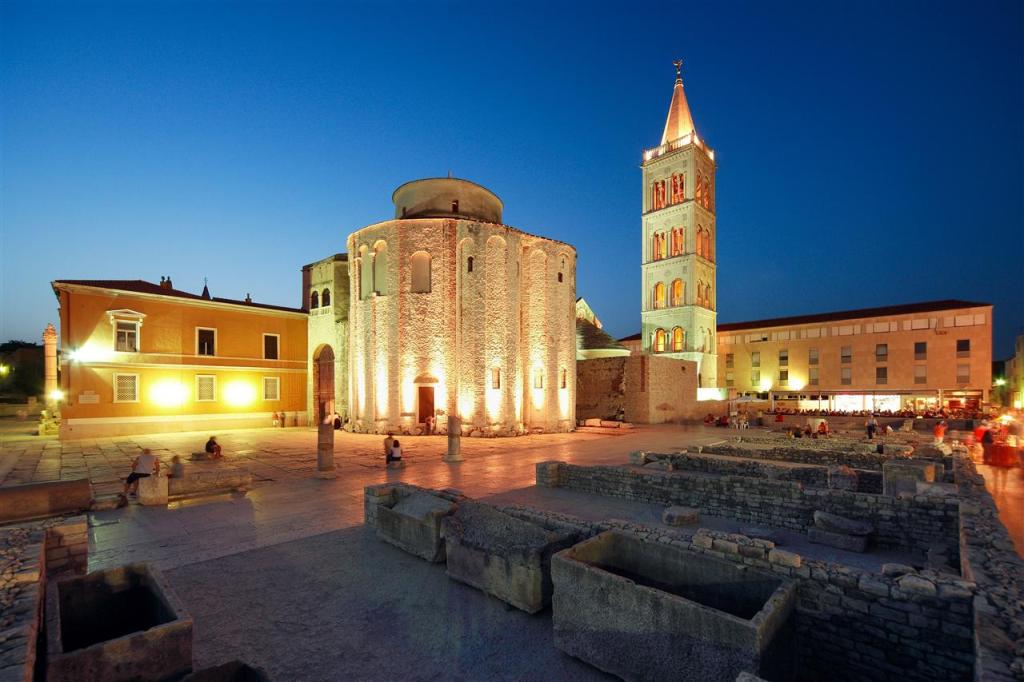Zadar
You are here: Home > Destinations > Croatia > Zadar
About Zadar
Zadar is one of our favourite places in Croatia; it is a great base from which to visit the National Parks of Paklenica and Krka, the beautiful village of Nin, Pag island via its bridge, the Kornati Islands and, of course, the stunning coastline of this region of the Adriatic. Zadar is a town steeped in history, it was at one time the capital of Byzantine Dalmatia, and dates from the ninth century BC. Zadar's old town is surrounded on three sides by water and the town's natural defences were enhanced by the Venetians who built the massive walls to keep out Turkish invaders. Zadar is renowned for its many fine churches including the impressive St Donat's which is the largest pre-Romanesque building in Croatia.
Zadar came under attack during the Second World War and again from the Yugoslav National Army in 1991 but has bounced back to show off its beauty and character to the full. Today, Zadar has developed into one of the most interesting towns on the Dalmatian coast - places to visit include the impressive Sveti Donat, St. Anastasia's Cathedral, the Archaeological Museum, National Museum, Museum of Church Art, the Land (or Lion) Gate and the Five Wells Square. The livelier side of Zadar can be found along the cafe-lined Siroka Street down to where it meets Trg Narodni (National Square).
Sightseeing in Zadar
Numerous churches and cultural monuments dating from all historical periods have been preserved from the Roman period through the Middle Ages to the modern styles of architecture. The symbol of the city of Zadar and the most famous monumental edifice in Croatia from the early Middle Ages (9th C.) is the pre-Romanesque church which was called the Church of the Holy Trinity until the 15th century and from that time on carries the name of Saint Donat, by the bishop who had it built.
The town as a whole has so much to see in a small area – churches, museums, a fabulous market, historic walls and its old port; one of our favourite places is the southern area which includes the Five Wells Square (Trg Pet Bunara), the famous Land Gate and the Queen Jelena Madijevka Park from which you can relax and also enjoy stunning views of the town and out to sea.
Zadar also has a couple of quite unique features built into its redeveloped north-western shoreline, the Riva - the Sea Organ and the Greeting to the Sun. The sea organ consists of several stairs that descend into the sea; the stairs extend for about 70 metres along the coast, 35 pipes of different length, diameter and declination were built and end in a canal. On the pipes there are whistles, which play 7 chords of 5 tones, above the canal there are perforated stone steps through which the sound comes out, the air being pushed by the sea. The Greeting to the Sun is a large disc on the ground which captures the sunlight during the day and provides visitors with a light show in the evenings.
Activities available include cycling, paddle boarding, sea kayaking and snorkelling; nearby we can also offer river canoeing and guided hikes. Zadar is very central and makes an ideal stop of up to 3 nights on most fly drive holidays; there is even a direct flight link from the UK to Zadar (seasonal).
Sightseeing and alternative places to stay nearby
Zadar is an excellent base from which to explore the area, including the islands of Pag, Rab and Ugljan, the National Parks of Paklenica and Krka Waterfalls and the Kornati Archipelago - the largest in the Mediterranean. An exceptionally indented coast, islands and untouched natural bays attract many sailors to this area. The archipelago which consists of 24 bigger and 300 little islands, 3 nature parks (Telašćica, Northern Velebit and Vransko Lake) as well as 5 National Parks (Paklenica, Plitvice, Kornati, Krka and Velebit) rank Zadar and its surroundings on the top of the Croatian tourist trail. Thanks to its geographical position, Zadar has a mild Mediterranean climate (warm and dry summers, and mild and rainy winters) which is reflected in its beautiful Mediterranean vegetation.
Pakoštane
Pakoštane is on a shallow land strait between Vransko Lake and the Adriatic Sea, so the immediate vicinity of two different worlds, the sea and freshwater, gives it a special charm. The relaxed atmosphere of the town, the beautiful beaches and islets close by, the rich vegetation, and a wide variety of taverns and restaurants as well as numerous activities are some of the reasons why it is so popular.
Nature Park Vrana Lake
In the northern part of Dalmatia there is a Nature Park which includes Vransko Lake, the largest freshwater lake in Croatia, and it is situated right next to the sea separated by a thin strip of land. In this location is the Mašković Han Heritage Hotel, the most striking example of Turkish civil architecture. The lake is an important bird habitat site as well as being rich with fish. Along the lake there are numerous walking and cycling trails and wooden observatories such as at Kamenjak, which offers views of the entire park, coast, sea and surrounding islands. Among the other monuments is the interesting site of Gradina, or the remains of a Benedictine monastery from the 9th century.
- Vrgada is a small island not far from Pakoštane, which served as a viewpoint for monitoring the Adriatic Sea route. The island itself is covered with dense pine forests and has beautiful sandy and pebble beaches; there are no cars on the island, so peace is truly guarantee.
- Čelinka - above the town of Drage there is the viewpoint Čelinka offering a beautiful view of the islands of Vrgada and Kornati, and the towns of Drage and Pakoštane from one side, and Vransko Lake on the other.
- Kamenjak - on the north side of the Vransko Lake, on top of a hill rising above the middle part of the lake, there is a landscaped viewpoint and the info centre Kamenjak from where there is an enchanting view of the whole lake, the coast and the surrounding islands. At the viewpoint there are also a souvenir shop and a tavern offering local Dalmatian specialties.
Biograd na Moru
Only a few miles east of Zadar is the town of Biograd; the old part of the town is located on a small peninsula surrounded by the bays of Bošana and Soline, where beautiful beaches are located. It carries the title of the Croatian royal town as in the 11th century it was the seat of Croatian kings and bishops and the Croatian-Hungarian King Koloman was crowned there.
We look forward to being of service.
Hotels to visit
Where to stay
Flexible Tailor-Made Holidays
- We believe passionately that no two holidays should be the same.
- With our flexible tailor-made holiday options you can travel at your own pace.
- Rediscover a city, a resort or an island in a weekend or longer.
- Take a small group tour or embark upon a more adventurous trip.
Trusted Service
- ATOL cover for flight inclusive holidays.
- One of us at Rediscover the World is very likely to have visited the hotels and travelled along the routes on your itinerary.
- Dynamic, comprehensive travel app with all your documents, maps and much more.
- Full financial protection for your holiday (TTA).
Why book Croatia with us ?
- More than 30 years experience of the region
- Unrivalled expertise of local partner
- Fly-drive holidays in Croatia & neighbours
- Island Hopping / Activity holidays
- Food-themed breaks & Christmas Markets
- Honeymoons
- 24hr assistance in Croatia
Reviews
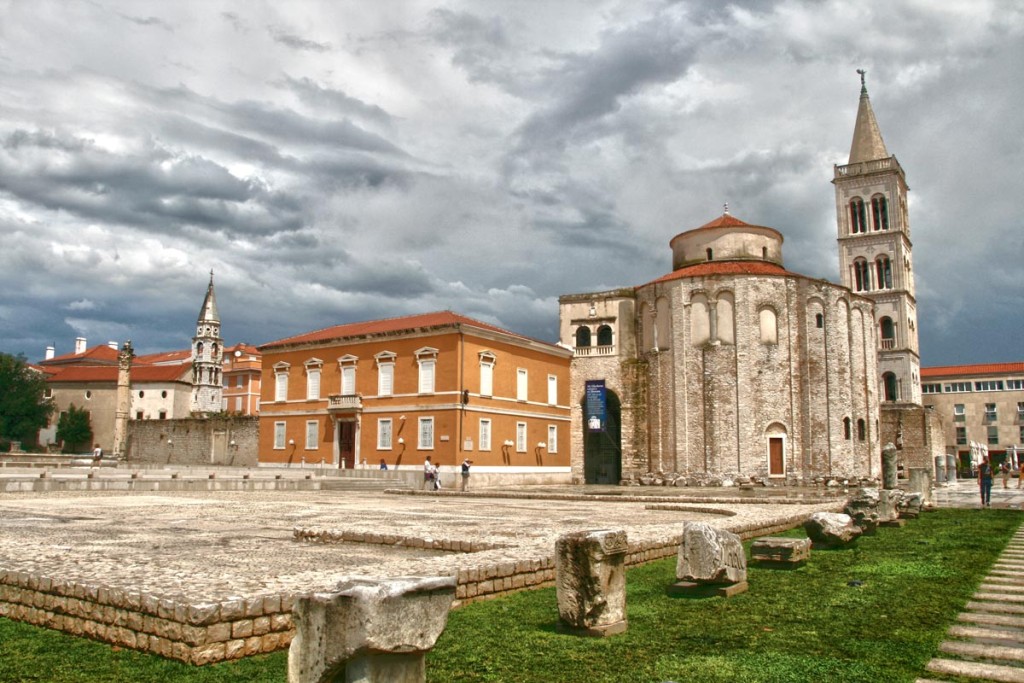
 - Zadar Tourist Office.jpg)
.jpg)
